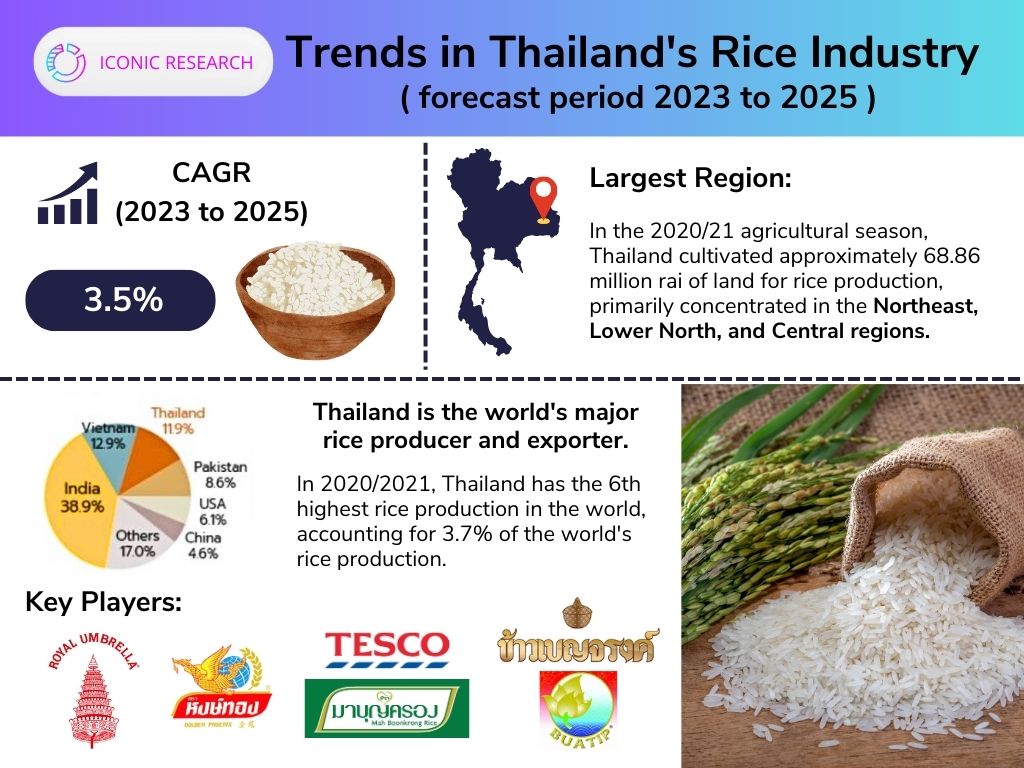Thailand’s Rice Industry Market Size is predicted to show a 3.5% CAGR (The compound annual growth rate) during the forecast period for 2023-2025.

Basic information:
Thailand holds a prominent position as a significant global rice producer and exporter. In the 2020/2021 period, Thailand ranked 6th worldwide in rice production, contributing to 3.7% of the global output. This places it behind China, India, Indonesia, Bangladesh, and Vietnam, which account for 29.3%, 24.1%, 7.0%, 6.8%, and 5.4% of production, respectively. Moreover, Thailand stands as the third largest rice exporting nation, holding an 11.9% market share, trailing behind India and Vietnam, which possess larger shares of 38.9% and 12.9%, respectively. Competing countries such as Pakistan, the United States, and China also play notable roles in the market.
Largest Region:
In the 2020/21 crop season, Thailand cultivated rice across a total planting area of 68.86 million rai, with a major focus on the Northeast, Lower North, and Central regions. Rice cultivation in Thailand heavily relies on rainwater. A crucial planting period spans from May to July each year, coinciding with the rainy season, and the harvest takes place at year-end. This type of rice is referred to as “Napee rice.” The country’s rice production primarily consists of white rice, jasmine rice, and glutinous rice, constituting over 84% of the total annual output. The remaining 16% constitutes “off-season rice,” which is cultivated during the dry season and necessitates irrigation. This rice type is typically grown in the Central and Northern regions.Competitive Landscape:
Thailand’s major rice players.